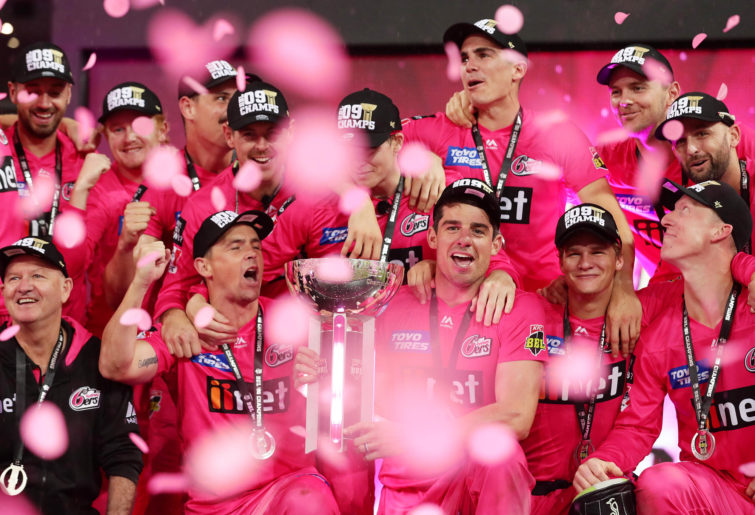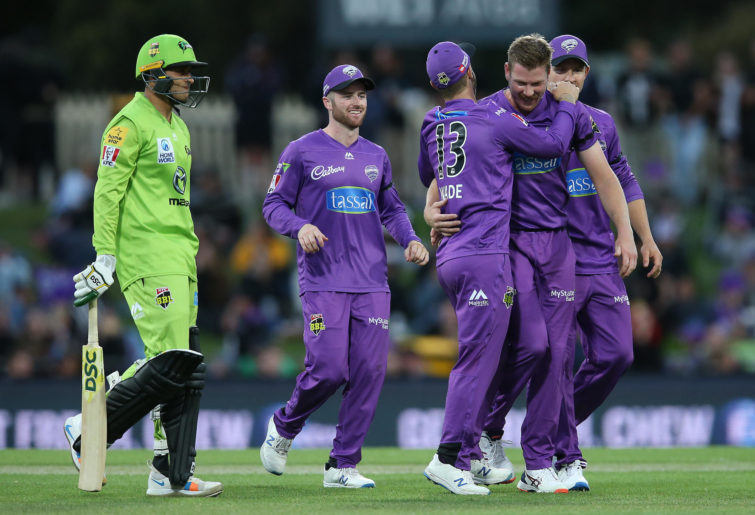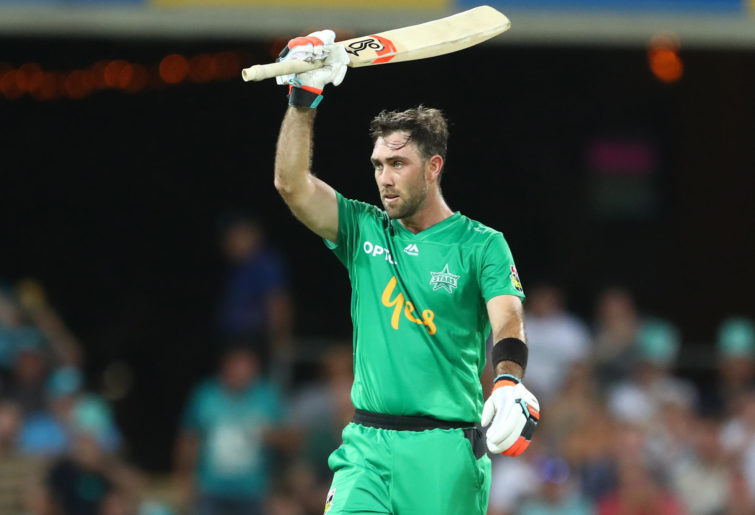Recently, we received the news that amid a time of major upheaval for cricket in Australia, Cricket Australia and BBL bosses have decided to stick with the 56-game regular season and five-game finals series format for the upcoming season.
The current format came into existence during April 2018, when Cricket Australia announced a new, record, six-year deal with Seven and Fox Sports, worth $1.182 billion dollars. CA were understandably chuffed with this outcome, but evidence suggests that they completely underestimated the true implications of this agreement.
The deal was made up of a rights bundle, which included Australian men’s cricket, an expanded BBL season as well as a landmark agreement for women’s cricket. More consequentially though, the deal also heralded cricket’s partial move away from free-to-air TV for the first time. Australian men’s ODIs and T20s were put behind the Fox Sports paywall.
Free-to-air cricket on network television has been a cultural cornerstone of Australian life for many decades. To many passionate cricket fans, the sight of cricket on TV signifies the end of the cooler months and the glorious onset of hot and sunny days, beach trips, BBQs and backyard cricket.
In light of this, it was understandable that many people were outraged by the pay-walling of ODIs and T20s from 2018 onwards.
However, unlike England, where cricket disappeared from free-to-air TV and public consciousness for the better part of a decade and a half, at least the CA bosses had the common sense to keep Tests, a handful of World Cup games and half the BBL season on free-to-air TV.
However, this article is not another re-hashing of the free-to-air versus pay TV debate. Instead I want to focus on the fateful decision to expand the BBL season.

(Photo by Mark Metcalfe/Getty Images)
By all accounts, this expansion has been a failure for Cricket Australia. Average crowds and TV ratings have fallen for the third season in a row, and the overwhelming feedback from fans has been that of viewer fatigue.
Originally designed as a short, sharp, fun format of eight teams playing 31 games in total, the expansion to 61 games (a full home-and-away season and an enlarged finals series) represents a radical departure. The falling numbers have alarmed CA bosses, but after consultation with relevant stakeholders, they have decided to keep ploughing on with the 61-game season, as any reduction would have meant less broadcasting money for the board.
I can understand the decision in the light of losses brought upon by the COVID-19 pandemic, but it is a short-sighted decision and I am afraid that it risks killing off CA’s golden goose for good.
Instead, the BBL’s managers and CA events executive Anthony Everard are proposing a raft of tweaks to playing conditions to spice up the tournament.
Let’s look at some of these proposed changes.
• Bonus points available to teams for their progress at the ten-over point of an innings
• Substitutions also allowed within that same period
• Power play split between the first four overs of the innings and two overs floating elsewhere
• Free hits for the bowling of wides
• The addition of extra breaks for advertisements and player strategy after every five overs
• A draft for overseas players is also expected to be up for consideration
Each and every one of these proposals borders on the farcical. And crucially, they will do nothing to arrest the slide in ratings for the tournament.
The proposals (if implemented) are going to add an extra layer of gimmicky-ness to the existing cartoonish nature of BBL, with the bat flips, yellow caps, the 90-second ad breaks, mic’d-up players and in-game player interviews.
Already, the BBL comes a distant fourth in quality behind the Indian Premier League (IPL), Caribbean Premier League (CPL) and Pakistan Super League (PSL). And rather than look to those tournaments for inspiration, it seems that CA are determined to Americanise the BBL as much as possible, in search of that elusive pot of gold.

Should the BBL follow the IPL’s lead? (AP Photo/Rafiq Maqbool)
Despite the infusion of cheerleaders, Bollywood celebrities and over the top glitz, the IPL works really well as a product due to the main focus being on the quality of cricket itself, rather than the supplemental entertainment. I should add, though, that any comparison of the BBL to the IPL is indeed unfair, as Australia does not possess the population size of India nor the billion-strong cricket-mad fan-base.
Furthermore, the BBL also does not have the luxury of an international window, which means that the best foreign players in the world as well as domestic Australian stars such as Pat Cummins, Steve Smith, David Warner and Mitchell Starc are unavailable for extended periods throughout the tournament. Therefore, I will refrain from any comparison to the IPL and instead use the CPL as an example that the BBL can emulate.
As a tournament, the CPL is actually far more disadvantaged than the BBL. It only services a domestic broadcast market of seven million and is an expensive undertaking necessitating travel and hosting of games between six to eight different countries.
Similarly to the BBL, the CPL also does not possess the luxury of a dedicated international window. Furthermore, the game of cricket in the Caribbean increasingly faces competition from football and basketball due to various reasons such as the decline of the all-conquering Windies team, the proximity of the giant USA sports market and the ready availability of superstar basketballers in the NBA.
Despite all this, the CPL has been a tremendous success ratings-wise (both in domestic and overseas markets) and is even expected to turn a profit in the coming years. Viewing numbers for the inaugural tournament numbered 36 million in 2013.
Since then, those numbers have exploded and in 2019 alone, the total viewership numbered 312 million, an almost ten-times increase since 2013.
These numbers are plain staggering! The organisers deserve lots of credit. Chief operating officer Pete Russell recently re-iterated his firm belief that the CPL is comfortably the second best domestic T20 tournament after the IPL. And with future plans of setting up an USA franchise, a fully fledged women’s league and further digital expansion, few would disagree. The future does indeed look very bright for the CPL.
So rather than look to the NFL and NBA, CA should seek to learn a lesson or two from the folks at the CPL. Keeping that in mind, I will lay out a list of recommendations for BBL, which I believe will help with reversing the slide in ratings and also improve the overall product.
My recommendations for the BBL
1. Less is more
Reduce the group games to nine or ten per season from the current level of 14.

(Photo: Jason McCawley – CA/Cricket Australia via Getty Images)
Sometimes, less is more. Audiences started declining sharply when the group games went up to 14 a season, from ten in 2018-19. When audiences are presented with a larger selection of games to choose from, they naturally become more selective, as they don’t possess enough time or money in their lives to attend every single game.
This has a flow-on effect of deflating the average attendance per game figures. Furthermore, when you expand to 61 games from 43 in just a two-year period, spectator fatigue is bound to kick in at some point. I do acknowledge the unfortunately reality that CA are caught between a rock and hard place.
They got greedy, chased the dollar and signed lucrative deals with Channel Seven and Fox Sports on the premise of a 61-game season. So now they are stuck to this long, drawn-out format in order to meet broadcaster commitments. This is highly unfortunate, as a reduction in games is urgently required to revive spectator interest.
2. Expansion
Expand the competition to ten franchises. That sounds crazy in the current climate, right? Well, not really, if you consider my idea carefully.
The sensible way to pull this off is to expand to ten teams, while also reducing the total games per season at the same time. Canberra deserves its own franchise. Currently, they only have two teams (at least on the men’s side), which they can call their own: the Brumbies in rugby union and Raiders in rugby league.

Canberra fans are crying out for more sport. (Matt King/Getty Images)
It’s a market with lots of growth potential and the summer slot is entirely vacant. Healthy crowds at neutral Big Bash games, as well as Australian men’s games at Manuka Oval, show that there is a robust appetite for cricket in the chilly capital city. So expansion to Canberra is a no-brainer.
Another exciting expansion option is a combined Pacific Islands team, featuring players from Vanuatu and Papua New Guinea. Papua New Guinea recently qualified for the T20 World Cup and they possess some genuine, good quality, all-round players. They have the largest school cricket program in the East Asia Pacific, with the 2020 BSP School Kriket program reaching an estimated 1.5 million kids.
PNG represents an exciting growth market for cricket. They have a population of 8.9 million people, which is larger than the West Indies and New Zealand. Getting them involved in the BBL will not only do wonders for PNG cricket, but also expand BBL’s broadcast audience. Combining PNG’s talent with the very best from Vanuatu (who also feature some potential T20 stars) will make for an exciting franchise team with solid support and also add a distinctive Pacific flavour to the BBL. For the sake of convenience and costs, this combined Pacific Team can be based in Townsville for the duration of the tournament, thereby avoiding overseas travel.
A single round-robin ten-team league with a five-game finals series would feature 50 games, which is still 11 games less than the current 61-game format. Not only are you reducing games per season, but also expanding cricket’s footprint into new areas and exposing the tournament to new broadcast markets.
3. More overseas players
Increase the quote of starting XI overseas players to three or four. The Australian cricket fraternity has long complained that the BBL talent pool is stretched too thin. Due to the BBL season overlapping with that of the Australian international men’s calendar, superstar players such as Pat Cummins, Steve Smith, David Warner, Glenn Maxwell and Mitchell Starc are mostly unavailable to play for their BBL franchises.

(Chris Hyde/Getty Images)
Coupled with BBL’s inability to attract genuine international stars to the competition, these problems get magnified even further. I understand that adding an additional two franchises on top does not sound ideal, but these can be counterbalanced by including a combined Pacific team and upping the starting XI overseas players quota from two to three or four.
There is a mistaken belief among full member countries that teams need to field the best players from these traditional nations in order to increase the quality of the competition. This cannot be further from the truth. There is just so much talent out there in the associate world, who are hungry to perform on the grand stage.
Imagine a BBL topped up by the cream of associate talent such as Oman’s Bilal Khan, UAE’s Rohan Mustafa, Scotland’s George Munsey, Kyle Coetzer or Calum MacLeod, Netherland’s Paul van Meekeren, Pieter Seelaar, Brandon Glover or Max O’Dowd and Namibia’s Gerhard Erasmus and JJ Smit.
Instead of featuring third-tier full member players, these associate cricketers would add so much to the tournament by giving it a unique flavour and a point of difference. There are many who are tired of seeing Chris Gayle or Andre Russell turn up to play for his 100th franchise. Once again, the BBL can look to the CPL for inspiration. They currently have a reserved spot for ICC Americas players, meaning that at least six associate players from that region get to showcase their skills in front of good crowds.
4. Get rid of the silly gimmicks
Say what you want about the IPL, CPL or PSL. None of these tournaments incorporate gimmicks to the level that the BBL does. There are no bat flips replacing traditional tosses, players getting mic’d up during play, wearing yellow caps and doing chummy in-game interviews with commentators.
It adds a layer of cringe factor and distracts from the seriousness of the competition. Let the quality of the play with its various ebbs and flows speak for itself. You do not require contrived accompaniments and gimmicks to liven it up. It speaks to a kind of insecurity that CA seem to have about the competition.
If, heaven forbid, they decide to include additional gimmicks like in-game substitutions, split power plays, bonus points and free hits for wides, the tournament risks becoming even more cartoonish and an instant turnoff for many fans.
5. Stop the constant tinkering with the tournament and finals format
The average CPL attendance was 9219 in 2013, 8358 in 2014, 8777 in 2015, 10,143 in 2016, 11,134 in 2017, 11,661 in 2018 and 11,773 in 2019.
Consider the data above. Despite operating in a limited broadcast market, the CPL has managed to increase the average fan attendance per game every year from 2016. Also, bear in mind that the total number of games played per season has stayed the same. This CPL success proves that you don’t need to engage in constant tinkering with the competition format to retain spectator loyalty.
Instead, by constantly changing the format and the dates of the competition, CA are not letting the BBL establish itself permanently on the Australian psyche. I would advise the BBL to engage in a strategic expansion, implement a simple round-robin season with ten teams and 50 games and stick to it for a while to see what happens on the spectator front.
A five-team finals series for an eight-team competition is also ridiculous, as it rewards mediocrity. A five-team finals series would work much better in a ten-team competition, where only half the teams will be able to contest for the finals.
So is the BBL destined to follow Super Rugby into a black hole? Or is there some life still left in the competition?


































































































